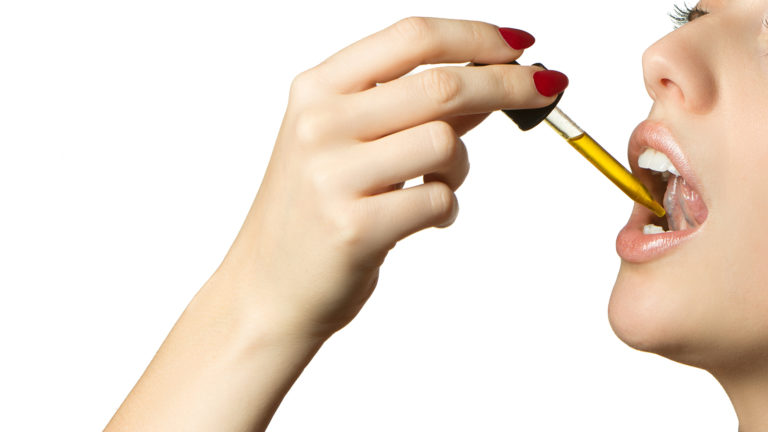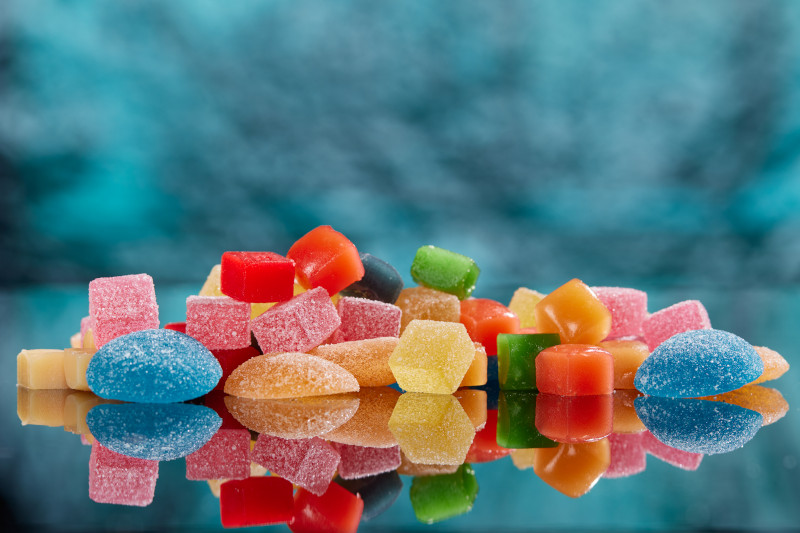Ask any cannabis consumer, and they probably have a preferred method of consumption. Some people love smoking, others are edible-only consumers, some prefer dabbing quality rosin, and others swear by dry herb vaporizers. This preference is rooted in more than just what feels good for your body — each method produces unique chemistry and therefore unique effects on the body.
Choosing your preferred cannabis product is the first piece of the puzzle. Next, you have to decide how to consume it. There are a variety of ways to consume cannabis, and the right consumption method is going to depend on the cannabis product you're using and what kind of experience you seek. Generally, consumption methods fall into four categories: inhalation, oral, sublingual, and topical.
In this guide, we'll explore both the chemistry behind each consumption method and the practical considerations for using them. Understanding why different methods create different experiences empowers you to make informed choices about your health, your rituals, and your relationship with the plant.
Order cannabis products from a dispensary near you for pickup or delivery.
Why consumption method matters
 Photo by: Gina Coleman/Weedmaps
Photo by: Gina Coleman/WeedmapsImage lightbox

The time of onset is one of the most important variables when predicting the effects of cannabis. It influences how intense the high feels, how much anxiety it might produce, and whether the experience feels more cerebral or more physical.
When cannabis is inhaled, through smoking or vaping, it rapidly enters the bloodstream through the lungs and reaches the brain within seconds. Peak effects can occur in as little as three minutes after consumption.
This is why inhalation is often described as producing a head high. The quick onset is helpful for people who need immediate relief from symptoms like gut inflammation, migraines, or pain, but it can also trigger a rapid, overwhelming rush that some find uncomfortable.
Before we dive into edibles, let's break down the key differences between smoking, concentrates, and dry herb vaporization.
Inhalation methods
When you inhale cannabis, all the active compounds, including THC, are absorbed into the bloodstream through the lungs. The time between inhalation and the compounds hitting your brain is almost immediate, making it the go-to for cannabis users looking for a near-instant high.
There are two main ways to inhale cannabis: smoking and vaping.
Smoking
 Photo by: Gina Coleman/Weedmaps
Photo by: Gina Coleman/WeedmapsImage lightbox

Smoking cannabis creates a complex cocktail of compounds that no other method replicates. The ember at the tip of a joint can reach temperatures over 1,000°F (538°C), causing intense chemical transformations.
How it works: When you smoke weed, you're lighting cannabis flower and inhaling the smoke. The active compounds are absorbed into your bloodstream through your lungs almost immediately. The THC and other cannabinoids reach your brain within seconds, producing rapid onset effects. Most users feel the peak effects within three minutes.
This heat catalyzes the formation of unique compounds such as cannabielsoin (CBE), cannabitriol (CBT), cannabinodiol (CBND), and cannabicyclol (CBL) — molecules that are not typically present in raw flower or at lower temperatures. Some of these compounds have shown potential anti-anxiety or antidepressant activity in early research..
Of course, not all of this chemistry is beneficial. Combustion produces tar, carbon monoxide, and polycyclic aromatic hydrocarbons (PAHs), byproducts that can irritate the lungs and carry potential risks. Still, the unique pharmacology of smoke contributes to the expansive, often nostalgic experience that many users prefer.
Beyond the chemistry, smoking carries a social and ritualistic significance from rolling to consumption. Sharing a joint or pipe often brings people together, encouraging conversation, grounding breaths, and connection — a human element that has been part of cannabis culture for centuries.
Ways to smoke cannabis:
There are several devices you can use to smoke cannabis flower:
- Pipes: Pipes are small, compact, and easy to use, making them one of the most popular devices for smoking cannabis.
- Water pipes: Water pipes, including bongs and bubblers, work similarly to pipes, but the smoke is filtered through water held in a chamber. The water cools down the smoke, creating a smoother inhalation experience.
- Joints: Joints are created by rolling cannabis into rolling papers — similar to a cannabis cigarette — before lighting one end and inhaling through the other.
- Blunts: Blunts are similar to joints, only they use cigar paper instead of rolling papers. Usually, a cigar is hollowed out and the tobacco replaced with cannabis, but you can also buy blunt wraps.
Vaping
 Photo by: Gina Coleman/Weedmaps
Photo by: Gina Coleman/WeedmapsImage lightbox

While vaping also involves inhaling cannabis, it operates at much lower temperatures, typically between 350–450°F (175–230°C), which changes the chemistry dramatically compared to smoking.
How it works: Instead of burning all plant material, vaporizers selectively release cannabinoids and terpenes while avoiding the combustion of cellulose and other unwanted compounds. This results in smoother vapor and fewer toxic byproducts.
Vapor doesn't release the same tar or carcinogens that are created when you burn flower, which many believe makes vaping a healthier alternative to smoking.
Dry herb vaporizers and dab rigs both fall under the umbrella of vaping, although their chemical profiles differ slightly. With vaporization, each breath tends to contain a higher proportion of active compounds and fewer irritants compared to smoking, often leading to a more focused and refined high.
Users frequently describe vaporization as a cleaner or clearer experience — more head-focused, but without the heavy, lingering haze associated with smoking.
Interestingly, recent survey data collected by the Network of Applied Pharmacognosy found that most dry herb vaporizer users cited better flavor, smoother vapor, and reduced lung irritation as their primary motivations for switching, while those who hadn't yet switched often mentioned cost or uncertainty about performance as barriers.
Ways to vape cannabis:
There are a few different vaping devices to choose from:
- Vaporizers: Vaporizers can be used with both concentrates and flower. Add the cannabis to a heating chamber, adjust the temperature, and inhale the vapor through the mouthpiece.
- Vape pens: Vape pens are specifically designed for use with oils or distillates. As the name implies, they typically look like pens. These devices consist of a cartridge that contains the cannabis oil or distillate, and a battery that provides the heat.
- Dabbing: Dabbing is a method of vaporizing cannabis concentrate using a dab rig, which entails heating a glass, ceramic, or titanium nail and applying the concentrate directly to the hot surface, which turns it into vapor.
Oral and sublingual consumption methods
 Photo by: Gina Coleman/Weedmaps
Photo by: Gina Coleman/WeedmapsImage lightbox

Edibles and drinks
Edibles represent a completely different pharmacological pathway. Instead of traveling from the lungs to the brain, cannabis eaten in food must first pass through the liver, where the chemistry changes dramatically.
How it works: During this process, THC is converted to 11-hydroxy-THC, a metabolite that can cross the blood-brain barrier more efficiently and may contribute to stronger, longer-lasting psychoactive effects.
Similarly, CBD and terpenes are also modified by hepatic metabolism, though research on these pathways is still emerging.
Because edibles rely on digestion and liver processing, onset can range from 30 minutes to two hours, depending on the product and your metabolism.
The slower onset means the come-up is less intense, and many users report less anxiety or paranoia compared to inhalation. Once absorbed, cannabinoids circulate throughout the body, producing a more physical, body-centered high — ideal for relaxation, pain relief, or unwinding at the end of the day.
However, many commercial edibles lose their terpene profile during processing. Without terpenes and minor cannabinoids, the experience becomes dominated by THC and CBD alone, potentially reducing the entourage effect that makes whole-plant cannabis unique.
Edibles come in various forms, including gummies, baked goods, beverages, and chocolates. For consistent dosing, stick with products from licensed dispensaries rather than homemade edibles.
Tinctures
 Photo by: Gina Coleman/Weedmaps
Photo by: Gina Coleman/WeedmapsImage lightbox

Tinctures offer a unique dual-absorption experience that bridges the gap between inhalation and traditional edibles, providing a distinct approach to consumption.
How it works: Created by steeping cannabis in alcohol, tinctures are primarily absorbed through the blood vessels under the tongue (sublingually). This creates two distinct phases of effects:
- First wave: Sublingual absorption (15–45 minutes) – cannabinoids absorbed under the tongue enter the bloodstream quickly, similar to inhalation but slightly slower.
- Second wave: Digestive absorption (like edibles) – remaining liquid is swallowed and processed through digestion, producing effects similar to edibles.
Learn more about how to use tinctures.
Topical methods
 Photo by: Gina Coleman/Weedmaps
Photo by: Gina Coleman/WeedmapsImage lightbox

Topical isn't exactly a traditional consumption method, but it is an important delivery method worth understanding. Topical products allow you to absorb cannabinoids through the skin, where they may provide localized effects for things like pain or muscle soreness.
How it works: Unlike other consumption methods, topicals work locally at the site of application. The cannabinoids interact with cannabinoid receptors in the skin and surrounding tissue, but don't enter the bloodstream in significant amounts. This means you won't experience any psychoactive effects when using topicals — making them ideal for targeted relief without intoxication.
Topical products include creams, lotions, balms, lubricants, bath bombs, and transdermal patches, which are designed for localized application.
Choosing the right consumption method for you
There is a huge variety of consumption methods with no one-size-fits-all solution. The right consumption method will depend on the cannabis product, your preferences, and your desired experience.
Here are some key factors to consider:
- Onset time: Do you need immediate relief or prefer a gradual experience?
- The experience type: What kind of effects are you looking for?
- Your lifestyle: Match your method to your situation.
Learn more tips about finding the right consumption method and dosage for you.
Now that you understand the different consumption methods available and the chemistry behind why they create different experiences, you're armed with the information to choose the right consumption method for you.
Bottom line
All of this chemistry reinforces a key idea: how you consume cannabis is just as important as what you consume. Each method alters the chemistry of cannabinoids and terpenes, changing how your body and mind respond.
Understanding the science behind these experiences empowers you to make informed decisions about your health, rituals, and relationship with the plant.




